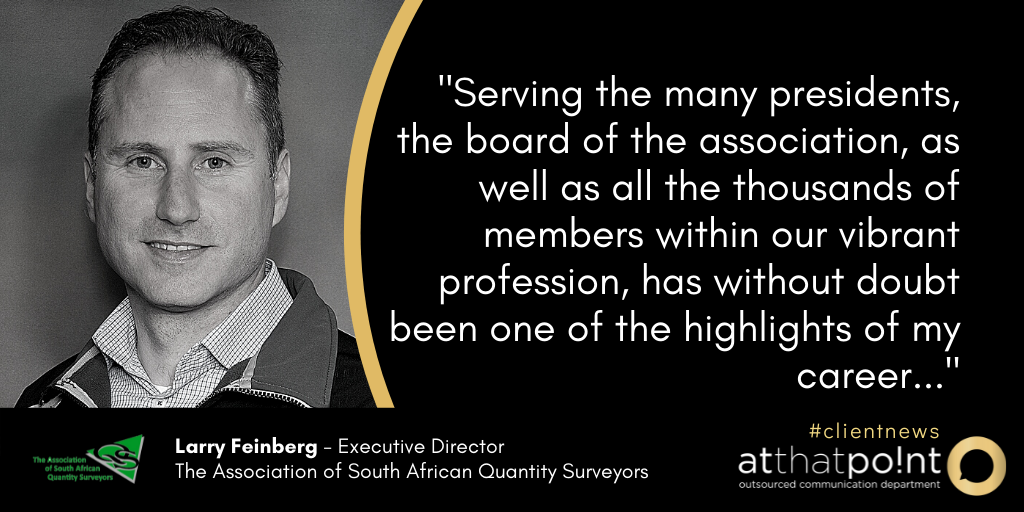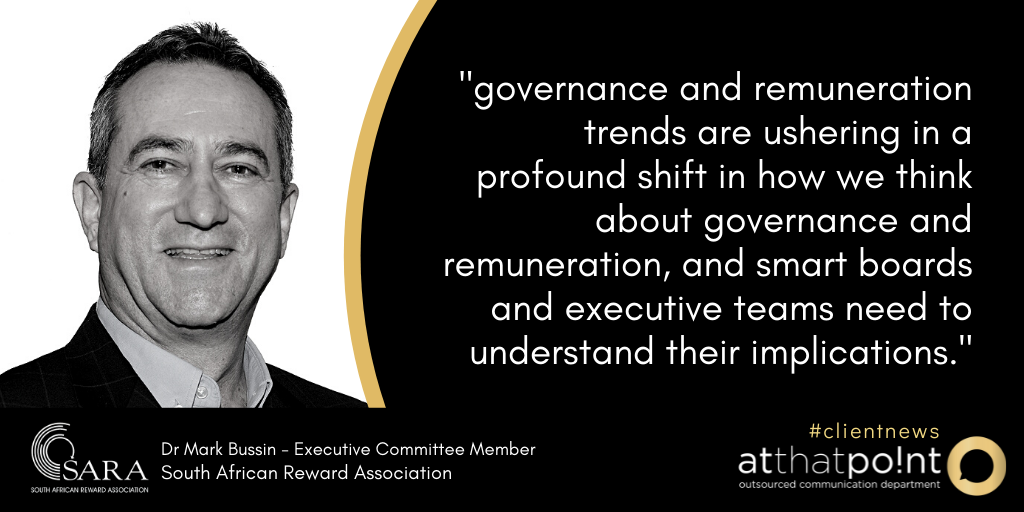|
Only by building risk intelligent organisations will leaders be able to overcome six distinct global threats identified by the Institute of Risk Management South Africa (IRMSA). This is according to Christopher Palm, IRMSA’s Chief Risk Advisor.
“Leaders at the highest levels of the private and public sectors must embrace an enterprise-wide culture of integrated risk management to secure their future,” he says. The threats The first threat is the exponential growth of information. Organisations who fail to build a competitive advantage around harnessing their data will be left behind. The second is the drive to adopt new technologies. Failure to effectively implement digital transformation and 4IR technologies will leave organisations vulnerable to those who do. Third is the ability to develop innovative business models. If leaders cannot create new, agile and flexible business models delivering faster, excellent decision-making they will lose ground to rivals. Fourth is disruptive competition. Young upstart enterprises are shattering traditional business practices with completely different approaches to delivering value. The fifth is a next gen market that not only expects data- and technology-driven experiences but supports agile disruptors over rigid incumbents. In other words, one has to be the best in breaking down barriers to entry or access to one’s prodcuts and services. Sixth is a geopolitical landscape marked by COVID-19, climate change, trade wars, and other socio-economic upheavals. Palm says these six risk factors mean the pace of business is constantly accelerating in an increasingly complex global environment, resulting in greater uncertainty than ever before and demanding more, faster, excellent decision-making. Risk-intelligent leadership These conditions compel leaders to make the right decisions more often, much faster and using the best information available to them. If they falter, disruptors will quickly force them out of their own market. “IRMSA believes the frameworks and methodologies of risk management can help them immeasurably,” says Palm. This means that private and public sector leadership must start thinking about the future together, using hindsight and insight to create foresight. “That is not enough though, thinking and designing alternative futures or responses to potential risks and opportunities, in advance and based on futures thinking and scenario planning, will, in essence, give your organisation the basis of fast and reliable decision-making in concert with a flexible and agile business model,” states Palm. Organisations who do this successfully typically integrate their strategy, risk management and resilience playbooks to optimise decision-making. They also acknowledge that delegating ownership and accountability throughout the organisation is critical. To bring agility to their business model, they discard tall management hierarchies in favour of empowering people with the right skills to make business-critical decisions at point-of-contact resulting in a risk intelligent and resilient organisation. Most of all, they break down silo mentality, that is, where information-sharing, decision-making and action are confined to a specific department or area of responsibility. “Risk management is collaborative by nature and that’s why we believe it plays a strong role in the risk intelligent future,” says Palm. Lastly, resilient organisations strive to become data-centric and technology-savvy to achieve their ends. Becoming risk intelligent A risk intelligent future is founded on public and private sector leaders having foresight that enables them to make excellent decisions. “Risk management is not just about avoiding danger but about leveraging opportunities - helps organisations map a sustainable growth path forward,” says Palm. A risk intelligent future will be the theme of IRMSA’s upcoming virtual conference from 30 Sep -1 Oct 2020, followed by a Master Class on 2 September 2020. Speakers from organisations showcasing their thought leadership in becoming risk intelligent organisations, both in public and private sector ranging from multinational organisations to small and micro enterprise will be in attendance. ENDS MEDIA CONTACT: Rosa-Mari, 060 995 6277, [email protected], www.atthatpoint.co.za For more information on IRMSA please visit: Website: https://www.irmsa.org.za/ Twitter: https://twitter.com/IRMSAInsight Facebook: https://www.facebook.com/IRMSAInsight/?ref=hl LinkedIn: https://www.linkedin.com/company/irmsa-institute-of-risk-management-sa/
0 Comments
Written by Pavana Ranjith IRMSA Executive Committee member
“The rate of change is so high everywhere these days that you now must assume that someone will disrupt you, and often from a direction you least expect. As Steve Forbes sees it “You have to disrupt yourself or others will do it for you.” – Extract from Exponential Organizations by Salim Ismail. The words “disruptive technology” invoke thoughts of uncontrolled chaos and uncertainty with many organisations viewing it explicitly from a negative impact to themselves and their related industry. This view is supported by a recently released study on the state of innovation in South Africa by Accenture, which indicates that even though the majority of South African companies are expecting to be disrupted by innovations in their industries over the next three years, half of them are not prepared to cope with it. Disruption creates opportunity. This is arguably best illustrated by those entrepreneurs and companies who have innovated out of the disruption created by the unprecedented and far-reaching consequences of the Covid-19 pandemic, by radically embracing or accelerating technological investments to remain relevant. The longer-term impacts will become prevalent through entrenching of the move to virtual workspaces and practices; digitization as a key platform for learning and skills development; accelerated autonomous health, manufacturing and transport industries; and far more integrated, diverse and coordinated supply chains to name a few. Do we as risk practitioners regard these as technological disruptions or technological innovations or both and how do we determine if our own organisations are equipped and informed to deal with the new normal? Risk Management has a responsibility to guide executives and decision-makers in understanding the risks and opportunities presented by disruptive technologies. Some of the key risks include the risk of being overtaken by competitors and new market entrants with cheaper and more efficient and effective business models, failure to meet the increased demands of clients, diminishing revenue channels and growth opportunities, inadequate talent pipeline, poorly-conceived responses to macro trends and changing consumer preferences. Some of the key features of innovative companies who disrupt and innovate include: Flexibility and adaptability: having the right technology with robust configuration or alternatively the practical strategies to move towards this. To illustrate this, some recent shorter term examples in the healthcare industry in response to Covid-19 include 3D printer technology used to produce airplane parts, now used to produce respiratory ventilators, drone technology to drop parcels and medication, and telemedicine with virtual visits and remote-patient monitoring. Data Analytics and Capabilities: coupled with flexibility and adaptability is having the right systems to efficiently obtain and analyse data to inform disruptions and innovations. Leadership and innovative culture: the above will not be successful without the innovative and delivery-driven leadership that understands that constant business change is part of the “way we do business”; a culture and organizational structure that supports, encourages and rewards innovation and creativity while supporting “quick fails” and a diversity of knowledge and skills to collaborate and implement robust solutions. We as risk practitioners are an integral part of this diverse workforce. Do we practice some of the key ways of understanding the risks and opportunities presented by disruptive technologies? The following are critical for the risk practitioner to consider helping broaden his/her understanding of these risks and opportunities:
The nature of our own jobs will evolve as technologies such as AI (artificial intelligence) will replace the mundane tasks of number crunching and report writing and free up time for deeper and more proactive value-adding risk work. Are we adaptable, flexible and appropriately skilled? Are we building the right data analytics now to ride the exponential headwinds of disruption and innovation? ENDS MEDIA CONTACT: Rosa-Mari, 060 995 6277, [email protected], www.atthatpoint.co.za For more information on IRMSA please visit: Website: https://www.irmsa.org.za/ Twitter: https://twitter.com/IRMSAInsight Facebook: https://www.facebook.com/IRMSAInsight/?ref=hl LinkedIn: https://www.linkedin.com/company/irmsa-institute-of-risk-management-sa/ |
Welcome to the IRMSA Newsroom
Archives
December 2020
Categories
All
|



 RSS Feed
RSS Feed